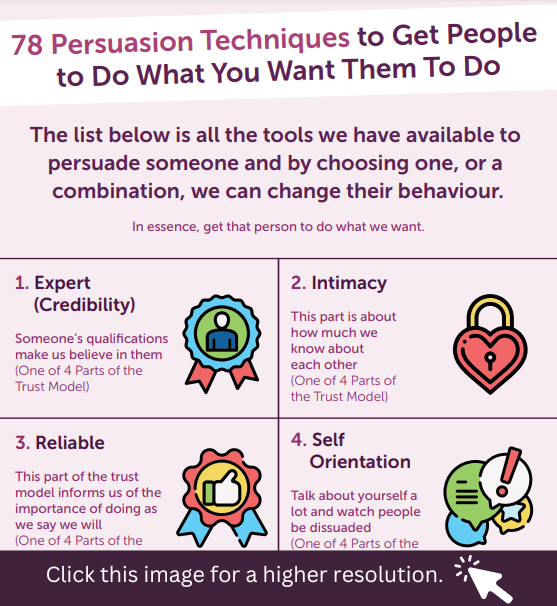Achieve Business Success Through Effective Communication Strategies
In the fast-paced world of business, where opportunities are endless and connections make all the difference, one skill stands out as the driving force behind triumphs and transformations – communication. From crafting compelling messages to navigating cross-cultural landscapes, the art of effective communication is the linchpin that propels businesses to greatness.
So join us on a journey to explore the key aspects of communication and discover how mastering this art can unlock the door to unparalleled success. Get ready to harness the true potential of your business through the magic of communication!
What Are the 4 Aspects of Communication?
1. Verbal Communication:
This aspect refers to the use of spoken or written words to express thoughts, opinions, and intentions. Whether it’s a face-to-face conversation, a business presentation, or a carefully crafted email, verbal communication forms the backbone of day-to-day interactions. Effective verbal communication involves clarity, conciseness, and the ability to tailor the message to suit the audience’s needs.
2. Non-verbal Communication:
Often overlooked, non-verbal communication encompasses the use of body language, facial expressions, gestures, and tone of voice to convey meaning. A significant portion of human communication is non-verbal, and understanding these cues is vital for interpreting a speaker’s true emotions and intentions. In the business world, a firm handshake, maintaining eye contact, and a reassuring smile can leave a lasting impression during meetings and negotiations.
Sticky Learning ® is 7 times more effective than 1-day training courses. Plus, you will get a Chain of Evidence proving your Return on Investment. Discover soft skills training that changes behaviours long term.

3. Written Communication:
This aspect revolves around the use of written language to communicate ideas, policies, reports, and various forms of documentation. From formal business letters to digital communication like emails and instant messaging, written communication is the cornerstone of professional correspondence. Crafting well-structured, error-free, and persuasive written messages is crucial in portraying a professional image and building credibility in the business realm.
4. Listening Skills:
Often considered the most neglected aspect of communication, active listening is an integral part of effective communication. Listening involves not just hearing the words being spoken but also understanding the underlying message and empathising with the speaker’s perspective. In business settings, attentive listening fosters better teamwork, reduces misunderstandings, and facilitates smoother problem-solving.

Verbal Communication Strategies
Effective verbal communication is the cornerstone of successful business interactions. One essential aspect of this skill is maintaining clarity and conciseness in messages. Business professionals should strive to express their ideas in a straightforward and easily understandable manner. Avoiding jargon or complex language ensures that the intended message is conveyed without ambiguity. Additionally, being concise in verbal communication respects the time and attention of others, making interactions more efficient and productive.
Tailoring communication to the audience is another crucial strategy in verbal communication. Different stakeholders, such as clients, colleagues, or executives, may have varying levels of expertise or interests. Adapting the language and tone to suit the listener’s background fosters better engagement and comprehension. For instance, while discussing technical details with fellow experts might require industry-specific terminology, explaining the same concept to a layperson might necessitate using simpler language and relatable examples.
Non-verbal Communication Techniques
In the realm of business communication, non-verbal cues can speak louder than words. Understanding and utilising non-verbal communication techniques can significantly impact the success of professional interactions.
Body language is a potent form of non-verbal communication that conveys emotions and attitudes. Maintaining an open posture with relaxed shoulders exudes confidence and approachability, while crossed arms might be perceived as defensive or closed off. In business meetings and negotiations, a firm handshake and appropriate eye contact can establish trust and leave a positive impression on others.
Facial expressions play a crucial role in non-verbal communication, as they provide valuable insight into a person’s emotions and reactions. A genuine smile can create a warm and welcoming atmosphere, putting others at ease during networking events or social gatherings. Conversely, a furrowed brow might signal confusion or concern, prompting the need for further clarification. Being aware of one’s facial expressions and interpreting those of others allows professionals to adjust their approach accordingly, leading to more effective communication.
When combining verbal and non-verbal cues, individuals project authenticity and sincerity in their communication. A mismatch between spoken words and non-verbal signals can create confusion and erode trust. By aligning the two aspects, professionals can reinforce the message they wish to convey, emphasising their honesty and credibility.
Mastering non-verbal communication techniques empowers individuals to convey empathy, confidence, and trustworthiness in their business interactions, building stronger connections and ultimately fostering success in the corporate world.


>> Advanced GROW Coaching Cards <<
Mastering Written Communication
In today’s digital age, written communication holds immense significance in the business world. The art of professional business writing requires a keen eye for detail and a knack for crafting persuasive messages. Clear and concise writing is paramount, as lengthy and convoluted content can lead to misunderstandings or disinterest from readers.
Professionals must ensure their written communication is well-structured, with a logical flow of ideas, to convey information effectively. Whether it’s drafting official reports, business proposals, or marketing materials, communicating clearly through the written word is a valuable skill that can leave a lasting impact on clients, investors, and colleagues.
Email etiquette is a crucial aspect of written communication in the corporate environment. With email being a primary mode of professional communication, it’s essential to adhere to best practices. Using a professional tone, maintaining politeness, and addressing recipients by name can set the right tone for business correspondence. Additionally, being mindful of response times and organising emails effectively through subject lines and concise messages contributes to a more efficient and professional communication culture within an organisation.
In the digital age, businesses can leverage written communication for marketing and public relations endeavours. Crafting compelling content for websites, social media platforms, and promotional materials can engage customers and attract new prospects. Understanding the target audience and tailoring the message to resonate with their needs and interests is key. With the potential to reach a global audience, well-crafted written communication can amplify a company’s brand identity, drive sales, and establish a strong market presence.

The Importance of Active Listening
Active listening is a vital skill that enhances business communication. By attentively engaging with the speaker, professionals can build stronger relationships and foster understanding. Employing empathy during active listening helps create a sense of connection and rapport, allowing individuals to grasp the emotions behind the words. Through active listening, colleagues, clients, and customers feel valued, leading to improved collaboration and customer satisfaction.
To improve communication and relationship building, individuals should focus on enhancing their active listening skills. Practising attentive listening during team meetings enables everyone to contribute effectively, promoting a sense of inclusivity and encouraging diverse perspectives.
Furthermore, in client interactions, actively listening to their needs and concerns empowers businesses to tailor their products or services to better suit their customers’ preferences. Through this two-way communication approach, businesses can cultivate a loyal customer base and respond to evolving market demands more effectively.

Cross-cultural Communication in Global Business
Cross-cultural communication poses unique challenges but also presents valuable opportunities for growth and global expansion. Misunderstandings arising from differences in language, customs, and social norms can lead to strained relationships and hinder business transactions. However, embracing cultural diversity and developing cross-cultural communication skills can provide a competitive advantage. To succeed in the global marketplace, businesses must promote cultural sensitivity, invest in intercultural training, and encourage open dialogues that foster mutual understanding among employees and partners from different cultural backgrounds.
One of the essential aspects of cross-cultural communication is overcoming language barriers. While English is often considered the lingua franca of international business, not all employees and partners may be fluent in it. Offering language training or translation services can bridge these gaps and enable effective communication.
Moreover, understanding cultural nuances in communication styles is crucial. For instance, some cultures may be more direct and explicit in their communication, while others may prefer indirect or nuanced approaches. Businesses should encourage their teams to adapt their communication styles appropriately, depending on the cultural context, to ensure messages are conveyed accurately and respectfully.
The Role of Emotional Intelligence in Communication
Emotional intelligence plays a pivotal role in shaping effective communication within the workplace. By understanding and managing emotions, professionals can foster positive interactions, build strong relationships, and navigate conflicts constructively.
Empathy, a core component of emotional intelligence, enables individuals to put themselves in others’ shoes, enhancing their ability to relate to colleagues, clients, and stakeholders. By acknowledging and validating others’ feelings, communication becomes more compassionate and supportive, leading to a healthier and more productive work environment.
Effective leaders recognise the impact of emotional intelligence on communication and seek to develop this skill within themselves and their teams. Leaders who exhibit emotional intelligence are better equipped to lead with empathy and understanding, which strengthens employee engagement and loyalty. They encourage open communication, making employees feel comfortable sharing their thoughts and concerns. By valuing emotional intelligence, leaders can defuse conflicts more effectively and promote a culture of open feedback, leading to continuous improvement within the organisation.

Building a Positive Communication Culture
Creating a positive communication culture is fundamental for businesses aiming to cultivate a healthy and productive work environment. One of the key components of this culture is fostering open communication channels that allow employees to express their ideas, concerns, and feedback freely.
Transparent communication helps in building trust between employees and management, encouraging a sense of ownership and commitment to the organisation’s goals. Moreover, establishing regular avenues for communication, such as team meetings, feedback sessions, and town halls, facilitates a constant flow of information, keeping everyone informed and aligned with the company’s vision.
In addition to open communication channels, providing constructive feedback mechanisms is vital for personal and professional growth within the organisation. Constructive feedback should be specific, actionable, and delivered with empathy. Employees who receive regular feedback on their performance can better understand their strengths and areas for improvement, leading to continuous development. Furthermore, a positive communication culture promotes a growth mindset, where mistakes are viewed as opportunities to learn and improve rather than sources of criticism.
Communicating During Crisis and Change
During such periods, transparency and timely communication are key. Leaders must communicate openly about the situation, its impact on the organisation, and the steps being taken to address challenges.
In crisis communication, it is essential to use various communication channels to reach different audiences effectively. Tailoring the message to the medium and audience ensures that crucial information is disseminated accurately and promptly. Moreover, appointing designated spokespersons and establishing a crisis communication team helps maintain consistency in messaging and avoids miscommunication.
During times of change, such as mergers, reorganisations, or significant shifts in strategy, transparent and empathetic communication is key to managing resistance and maintaining employee morale. Providing opportunities for employees to ask questions and share their concerns fosters a sense of inclusion and helps address apprehensions.
Feedback and Constructive Criticism
Feedback and constructive criticism are essential components of professional growth within a business setting. Regular feedback provides employees with valuable insights into their performance, helping them understand their strengths and areas for improvement. When delivered constructively, feedback focuses on specific behaviours or actions and offers suggestions for improvement.
In a culture that values feedback, managers and leaders play a crucial role in giving constructive criticism effectively. Instead of using harsh language or negative framing, they should approach feedback conversations with empathy and sensitivity. Providing recognition for a job well done and balancing it with areas for improvement helps maintain motivation and morale. By cultivating a culture of constructive feedback, businesses can foster continuous improvement, nurture talent, and drive overall organisational success.
In addition to giving feedback, fostering a culture that welcomes feedback is equally important. Feedback should not be limited to top-down communication; it should flow both ways, from managers to employees and vice versa. Creating opportunities for anonymous feedback, such as surveys or suggestion boxes, can also promote honest and candid responses.

Negotiation and Persuasion Techniques
Negotiation and persuasion are essential skills for professionals engaged in business deals, conflict resolution, or influencing decisions. Effective negotiation involves finding mutually beneficial outcomes while maintaining positive relationships.
One key technique is active listening, where individuals pay close attention to the other party’s needs and concerns. By understanding the underlying interests and motivations, negotiators can propose solutions that address those needs and lead to successful agreements. Additionally, being assertive and confident without being aggressive helps establish credibility and demonstrates the value of one’s propositions.
In the realm of persuasion, understanding the audience is paramount. Tailoring messages to resonate with the specific values and interests of the recipients increases the chances of success. Presenting compelling evidence and logical arguments strengthens the persuasion, while appealing to emotions can also be influential. However, ethical persuasion avoids manipulation or deceptive tactics and instead focuses on transparency and building trust.

Improving Team Communication and Collaboration
Effective team communication and collaboration are vital for the success of any business project or endeavour. One essential element of team communication is ensuring that goals, roles, and responsibilities are clearly defined from the outset. When every team member understands their tasks and how their contributions fit into the bigger picture, collaboration becomes more streamlined and efficient. Regular team meetings and progress updates help keep everyone on the same page, allowing for adjustments and resolving any potential issues proactively.
Collaboration tools and technology play a significant role in improving team communication, particularly in remote or distributed teams. Project management software, file-sharing platforms, and real-time communication tools facilitate seamless collaboration, even when team members are located in different geographical locations. These tools enable instant messaging, video conferencing, and file sharing, reducing the barriers to communication and enhancing teamwork. When utilised effectively, these technologies can streamline workflows, improve accountability, and enable real-time collaboration on shared documents or projects.
Conclusion
In conclusion, effective communication is vital for business success. Implementing strategies to enhance skills, embrace emotional intelligence, and foster a positive culture creates a productive work environment. Mastering negotiation, crisis communication, and collaboration empower professionals to navigate challenges and achieve success. Emphasising open and transparent communication fosters relationships, encourages innovation, and positions organisations for sustained growth.




